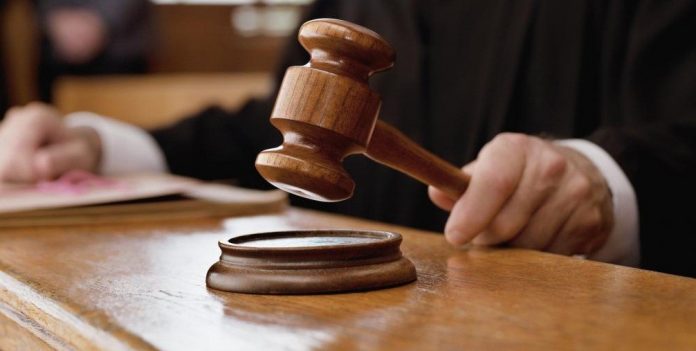Mary Roy v. The State of Kerala 1986 AIR 1011, 1986 SCR (1) 371
Introduction
This is a landmark case decided by the Hon’ble Supreme Court of India in which the court had for the first time decided upon the inheritance rights of a Christian Women against the law that had been earlier laid down in Travancore Succession Act of 1916 applicable upon Travancore Cochin Christians in Travancore area of Kerala.
Facts
- In this case, a widow, Mrs. Mary Roy was harassed and humiliated by her brothers for evacuating her father’s cottage.
- The brothers had hired goons for this purpose who threatened her to evacuate that place as soon as possible otherwise they will use physical force against her.
- Mrs. Mary Roy refused to do so as she did not have any other place to go.
- But her brothers kept on insisting her to evacuate as they claimed to be their property and that she did not had any claim over it under the Travancore Succession Act of 1916 and that she was under illegal possession of that place.
- Mrs. Mary Roy believed that her constitutional right to equality was being violated and therefore she determined to take resort of the court to restore her right.
- The reason for the dispute was that Travancore area was governed by Travancore Christian Succession law of 1916. This law was enacted because there was no law providing for succession in Christians belonging to that area before 1916.
- This law did not recognize the coparcenary rights of decedents in the property. It only made provision for the acquisition of property through inheritance. The lineal descendants could get the property only when a man dies intestate.
- Under S. 24 of the Act the widow mother used to get only life interest in the property and regarding the daughters it stated that when stridhan has already been given to the daughter, she could not claim any right in the property thereafter.
- Mrs Mary Roy first filed a suit against her brother George Isaac in order to get equal right of succession in her demised father’s property which was denied by the lower court. She filed an appeal in the Kerala High Court against the judgment fo lower court where the case was decided in her favour.
- But even that, her execution petition was allowed after 8 years of fighting the case. She got the possession of that property.
- When she started living at that cottage belonging to her demised father, her brother started humiliating her as stated above.
- Mary Roy decided to continue her fight against the wrongful deeds of her brother and therefore she decided to move to Hon’ble Supreme Court of India.
- Challenging the provision of Travancore Christian Succession Law 1916, Mrs Mary Roy filed a writ petition before the Hon’ble Supreme Court of India invoking constitutional remedy available under Article 32.
Issues Raised
The questions that were raised before the court were as follows]:
- Whether the provision relating to intestate succession under Travancore Succession Act of 1916 was in violation of provisions of Succession Act, 1925.
- Whether the Part B of State Laws Act 1951 was applicable on Travancore Act.
- Whether the old Travancore Cochin Succession Act 1092 will govern the question of intestate succession in Travancore Area or will it be governed by Indian Succession Act, 1925 Section 29(2) from the date of enactment of Indian Succession Act.
- Whether the decision of Kerala High Court was valid and thereafter shall it be made applicable retrospectively.
Judgment Delivered-
Bhagwati CJ while delivering his judgment in this case stated that:
- No personal law can be held above the Constitution of India and therefore if any Act even if applicable in an area is ultra vires the provisions of the constitution, such provision shall be held void and therefore will not be made applicable.
- Therefore it was held that the provision related to succession under the Travancore Succession Act 1916 being in violation of right to equality guaranteed under Art. 14 and creating discriminatory rights on the basis of sex under Art. 15 shall be held as void and therefore cannot be made applicable in the present case.
- Also, Part B of States (Laws) Act, 1951 repealed the Travancore & Succession Act, 1092 and so Chapter II of Part V of the Indian Succession Act 1925 became applicable in case of intestate succession of the property in case of members of the Indian Christian community and also to the members of Travancore community. Hence, Chapter II of Part V of the Indian Succession Act, 1925 was held applicable over the intestate succession even in that area.
- Because of this reason the law applicable on the region of Travancore relating to succession shall be Indian Succession Act 1925 and not Travancore Succession Act 1916.
- It was also held that the Kerala High Court’s judgment in favour of Mrs Mary Roy reinstating her possession over the said property was also held to have retrospective effect.
- The court, therefore, laid down that the widowed mother will receive 1/3rd of the property of her deceased husband, 1/3rd shall be taken by Mrs. Mary Roy and the remaining 1/3rd by her brother. So there was held to be no distinction to be made between the daughters and sons in the matters of intestate succession and they shall take the share equally.
- As obiter dicta, the court also held that in case a man dies intestate and has no children or the widow, her property will be first taken by his father, and in case of absence of his father as well, his mother, brothers and sisters will take the share equally.






Entire judgment in a nutshell. Highly informative and useful
Thank you lots!